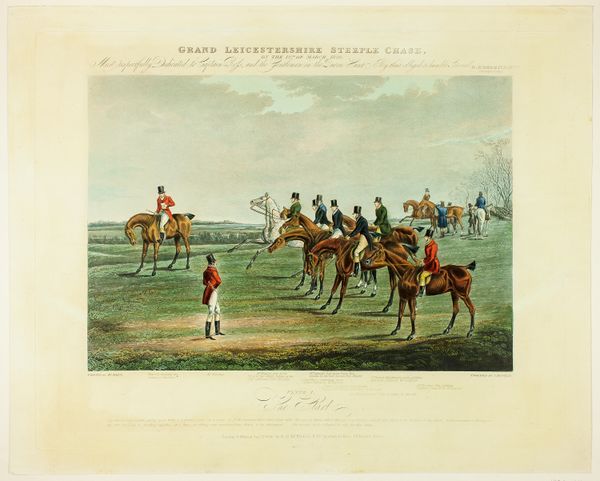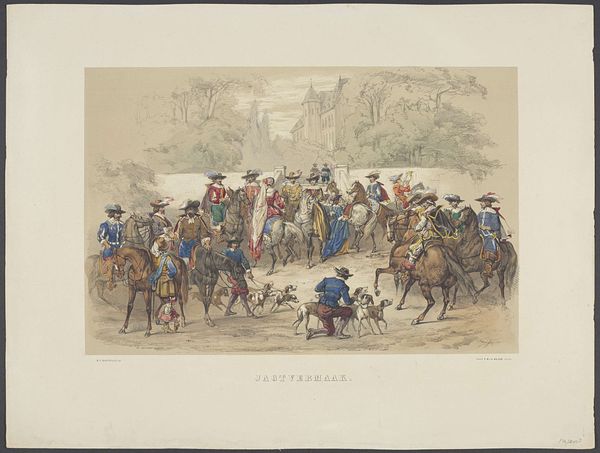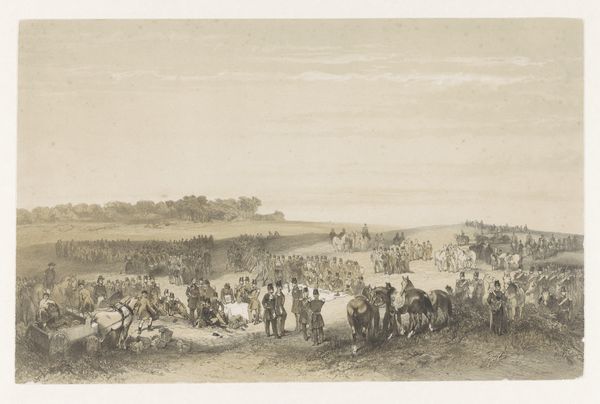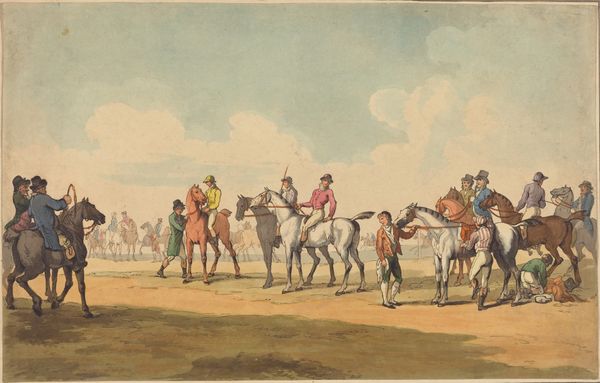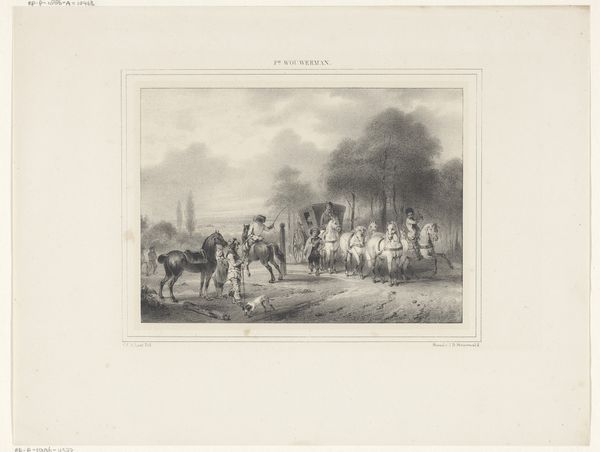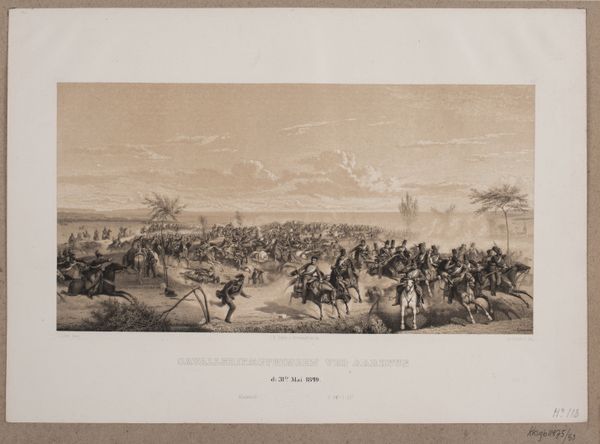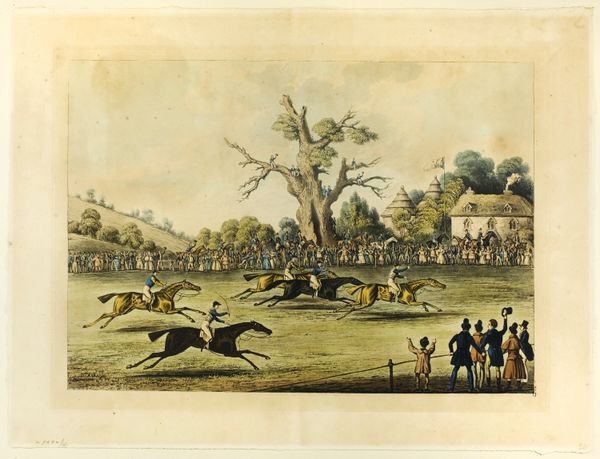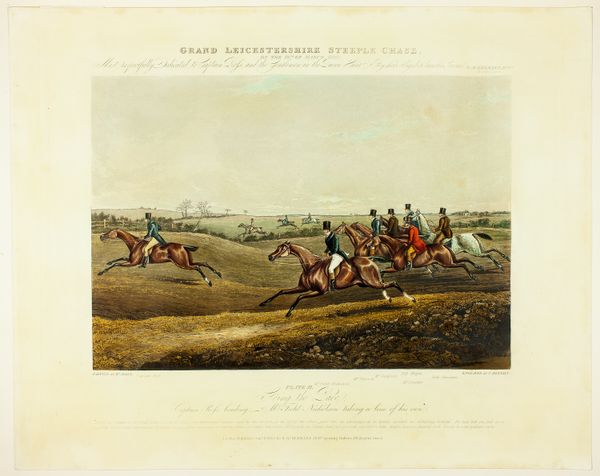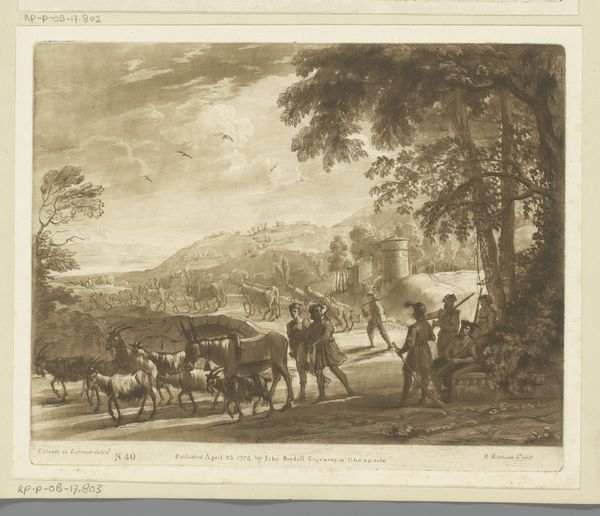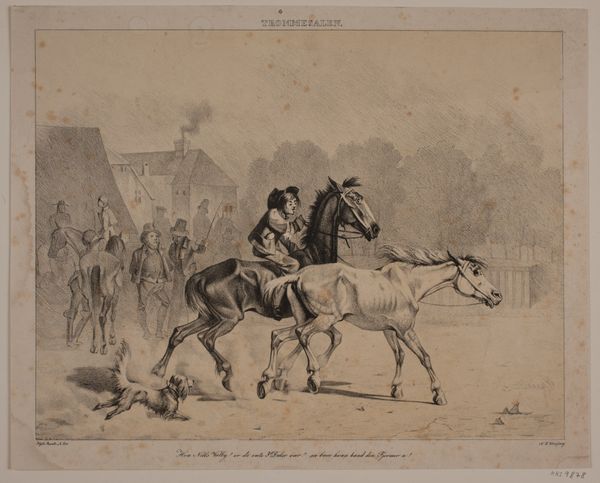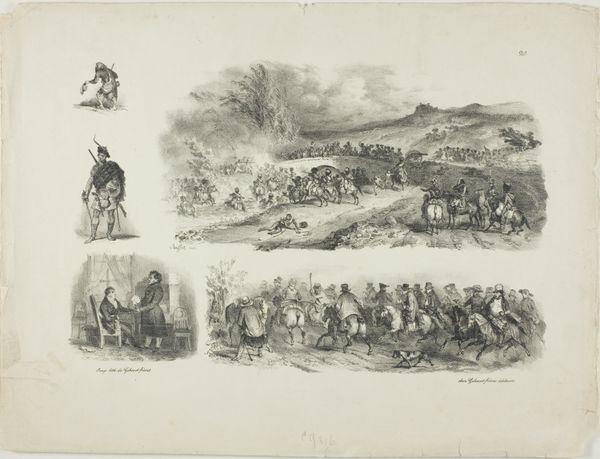
drawing, coloured-pencil, print, paper
#
drawing
#
coloured-pencil
# print
#
impressionism
#
landscape
#
figuration
#
paper
#
coloured pencil
#
genre-painting
Copyright: Public Domain
Editor: Here we have James Pollard's "Saint Albans Grand Steeple Chase," materials include colored pencil and print on paper. It has this feeling of open air, and the way the riders are lined up makes me wonder about how horse races were seen as forms of spectacle and entertainment for the elites. What aspects of its production stand out to you? Curator: Absolutely. Note the printmaking process itself. Consider the labour involved in creating multiple identical images, disseminating this scene of elite leisure to a wider audience, yet still consumed, obviously, by the bourgeois class. It’s no coincidence that colored pencil is used—it cheapens and almost 'crafts' the 'fine art' print tradition. How does that cheapness shape our understanding of its intended audience and its social purpose? Editor: So, the very means by which the image was produced informs its status as something perhaps not quite 'high art'? Almost blurring boundaries. Curator: Precisely! This isn’t just about aesthetics or pure artistry. Look at the materiality itself—the paper, the coloured pencils. They’re all manufactured commodities tied to specific economic and social conditions. This makes you ask important questions about what work gets valued and why, doesn't it? Editor: It really does. It sort of puts a new layer to the understanding of ‘art’. It's about how everything is related - its existence and audience included - and where this 'fits' within society! Curator: And understanding how "high art" can, through reproduction and accessible materials, filter down and become a widely circulated commodity itself is a major point. That changes the art!
Comments
No comments
Be the first to comment and join the conversation on the ultimate creative platform.


